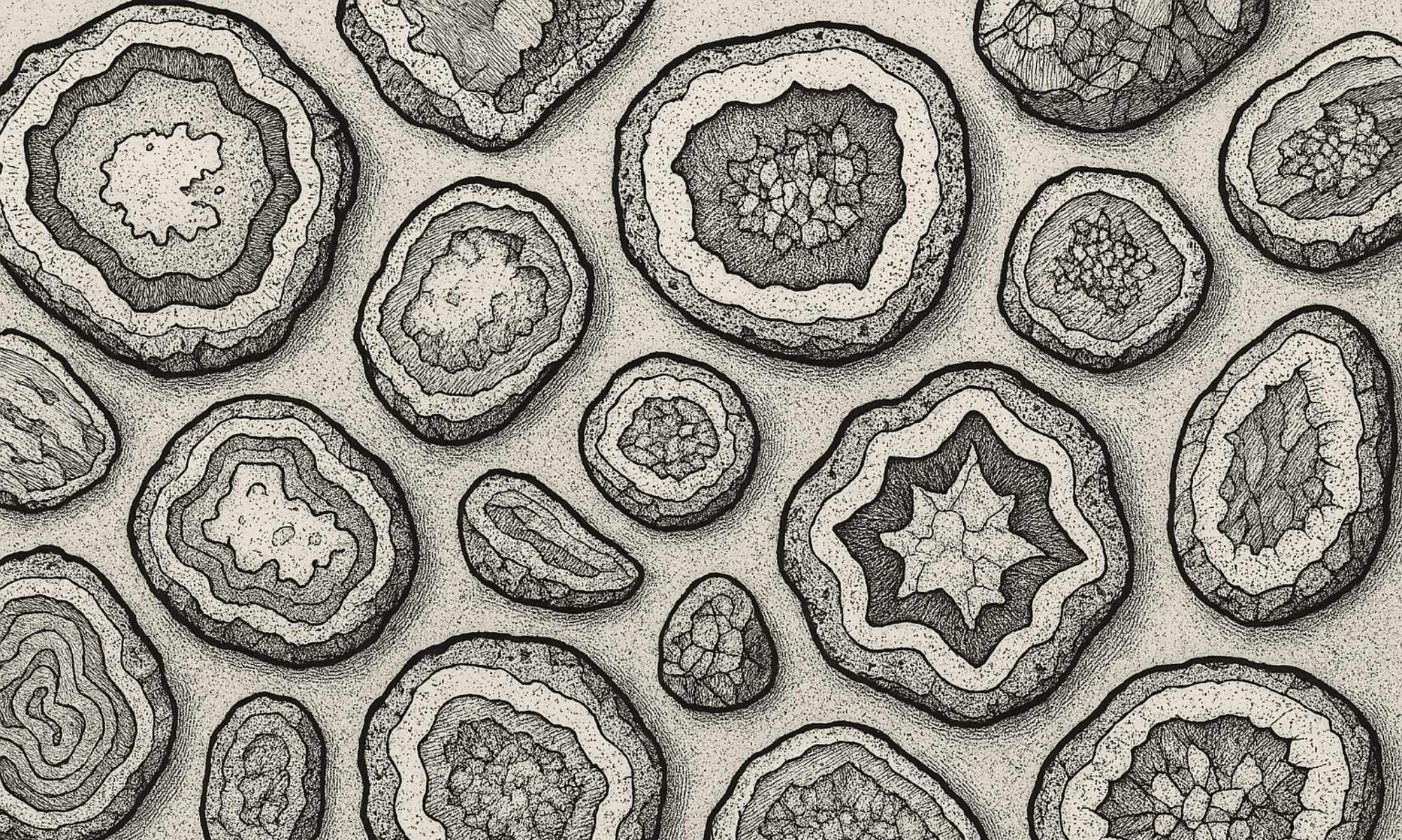For anyone who’s spent time rockhounding in the Pacific Northwest, there’s a good chance you’ve heard the name Nick Zentner. Maybe it was through a YouTube recommendation, a late-night geology rabbit hole, or a road trip podcast where his voice filled in the volcanic gaps between pit stops. However you found him, his lectures and interviews have become a kind of unofficial companion guide to the region’s wild geology—especially for those of us who like to collect a physical piece of it.
While Zentner isn’t a rockhound in the traditional sense (he’s a geologist and professor at Central Washington University), his work has had a real impact on the hobby. He connects the dots between landscapes and deep time, giving context to the strange, colorful, and sometimes frustrating rocks we dig out of the dirt. Whether you’re collecting thundereggs in Oregon, agates in Washington, or jasper in the Columbia Basin, there’s a good chance Nick’s explained the volcanic chaos that made it all possible.
From Rocks to Realization
One of the most valuable things Zentner does—particularly through his YouTube series, public television lectures, and podcast interviews—is translate the why behind what we find. It’s one thing to say “this agate came from a lava flow,” but it’s another to understand that it came from rhyolitic ash flows created during Miocene volcanism, deposited in complex sequences across now-eroded calderas, basins, and uplifted domes.
For rockhounds, this is gold. It gives structure to the hunt. Suddenly, you’re not just driving forest roads hoping for float—you’re tracing ancient fissures, reading tilted beds, and thinking in millions of years. Nick helps build that perspective with clarity and enthusiasm that makes you want to pick up your hammer and go back outside.
Popular Lectures That Hit Home
Several of Zentner’s lectures tie directly into rockhounding locations throughout the Pacific Northwest:
“Exotic Terranes” – Crucial for understanding the geological jigsaw of Washington and Oregon, especially when hunting near suture zones or in accreted terrains like the North Cascades.
“The Yellowstone Hotspot” – Offers excellent insight into the origin of many Eastern Oregon thunderegg beds and the volcanic fields around Burns, Prineville, and the Owyhee region.
“Rhyolite & Basalt” – Essential viewing for those hunting agates in perlite or thundereggs in ash-flow tuffs.
“Columbia River Basalts” – Ground-level relevance for anyone collecting near Saddle Mountain, Frenchman Springs, or in the Columbia Basin.
These aren’t just academic deep dives. They’re stories—layered with humor, field footage, hand-drawn diagrams, and moments of wonder that remind you why you fell in love with rocks in the first place.
Interviews That Bridge the Gap
In addition to his formal lectures, Nick’s interviews—especially with fellow geologists, students, and enthusiasts—reveal a spirit of curiosity that mirrors the rockhounding mindset. He often asks the same questions we ask ourselves while digging: Why is this here? What does it mean? What else is underfoot?
There’s a humility in his approach that resonates with diggers, cutters, and collectors alike. He doesn’t talk down; he invites you up. And whether you’re elbow-deep in red clay or staring at a polished nodule under a light, that invitation to understand makes the hobby richer.
Why It Matters
For many rockhounds, especially those in Oregon, Washington, and Idaho, Zentner’s work turns a hobby into a deeper connection with the land. It gives purpose to the places we go—transforming dry hillsides, roadcuts, and forgotten pits into living classrooms. Even if you’ve never taken a geology course, his content arms you with knowledge that leads to better finds, smarter digging, and a greater appreciation of what you bring home.
In a way, Nick Zentner doesn’t just teach geology—he enhances the hunt.
Final Thoughts
So, the next time you’re banging rhyolite on a windswept slope, digging thundereggs out of dusty trenches, or washing off agates in a creek, throw on a Zentner lecture. Let the landscape speak through his words. Because in the Pacific Northwest, rockhounding isn’t just about what you find—it’s about what you come to understand.
And Nick Zentner? He’s one of the best guides we’ve got.
